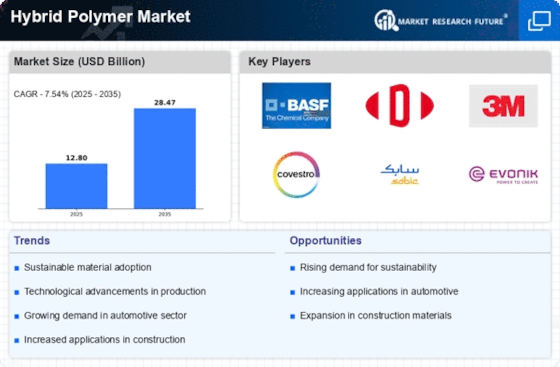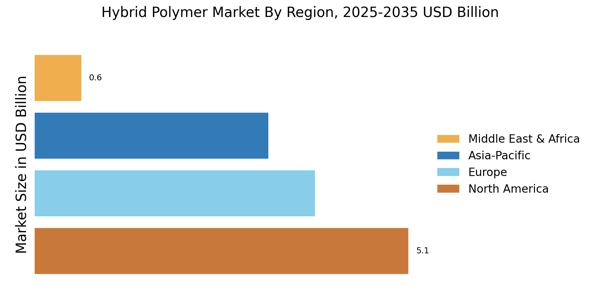Increasing Applications in Electronics
The Hybrid Polymer Market is witnessing a surge in applications within the electronics sector. Hybrid polymers are increasingly utilized in the production of flexible displays, circuit boards, and insulating materials due to their superior electrical properties and thermal stability. Market analysis indicates that the electronics segment is expected to account for over 30% of the total hybrid polymer consumption by 2026. This growth is attributed to the rising demand for lightweight and durable materials in consumer electronics, which is further propelled by the trend towards miniaturization. As the electronics industry evolves, the Hybrid Polymer Market is likely to expand its footprint in this dynamic sector.
Rising Demand for Lightweight Materials
The Hybrid Polymer Market is experiencing a notable increase in demand for lightweight materials, particularly in the automotive and aerospace sectors. Manufacturers are increasingly adopting hybrid polymers to reduce vehicle weight, thereby enhancing fuel efficiency and performance. According to recent data, the use of hybrid polymers in automotive applications is projected to grow at a compound annual growth rate of approximately 7% over the next five years. This trend is driven by stringent regulations aimed at reducing carbon emissions and improving energy efficiency. As industries seek to innovate and meet these regulations, the Hybrid Polymer Market is likely to see a surge in investment and development of new lightweight solutions.
Advancements in Manufacturing Technologies
Technological innovations in manufacturing processes are significantly influencing the Hybrid Polymer Market. The introduction of advanced techniques such as 3D printing and injection molding is enabling the production of complex hybrid polymer components with enhanced properties. These advancements not only improve the efficiency of production but also reduce waste, aligning with sustainability goals. Recent estimates suggest that the adoption of these technologies could lead to a 15% reduction in production costs for hybrid polymer components. As manufacturers continue to explore these technologies, the Hybrid Polymer Market is poised for substantial growth, driven by the need for high-performance materials.
Growing Focus on Renewable Energy Solutions
The Hybrid Polymer Market is benefiting from the increasing emphasis on renewable energy solutions. Hybrid polymers are being utilized in the development of advanced materials for solar panels, wind turbines, and energy storage systems. The integration of hybrid polymers enhances the efficiency and durability of these renewable energy technologies. Recent projections indicate that the renewable energy sector could drive a 20% increase in hybrid polymer demand by 2027. This trend reflects a broader shift towards sustainable energy solutions, positioning the Hybrid Polymer Market as a key player in the transition to a greener economy.
Regulatory Support for Sustainable Materials
Regulatory frameworks promoting the use of sustainable materials are significantly impacting the Hybrid Polymer Market. Governments worldwide are implementing policies that encourage the adoption of eco-friendly materials in various industries, including construction, automotive, and packaging. These regulations are fostering innovation and investment in hybrid polymers, which are often seen as a more sustainable alternative to traditional materials. Market data suggests that compliance with these regulations could lead to a 10% increase in hybrid polymer adoption across multiple sectors by 2025. As regulatory support continues to grow, the Hybrid Polymer Market is likely to thrive, driven by the demand for sustainable solutions.


















Leave a Comment